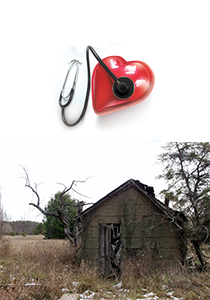
A recent press release from the American Heart Association, released on May 12, 2014, described how a research study in the American Heart Association journal Circulation linked an increase in blood pressure to living near a foreclosed property.
This may be the first time compelling evidence has been brought forth illustrating how the negative effects of the U.S. foreclosure crisis may be extending from the economic and financial realm into the public health sector.
Lead study author Mariana Arcaya, Sc.D, M.C.P., said “It demonstrates that a phenomenon that we think of as being solely in the financial realm is getting reflected in measured aspects of our physiology.”
The research found living within 100 meters of a foreclosed home increased a neighbor’s blood pressure by an average of 1.71 mm Hg in systolic blood pressure.
This may not seem all too significant, but an increase of .65 mm Hg in systolic blood pressure is roughly equivalent to aging one year. This means a 1.71 mm Hg increase from living near a foreclosed property roughly equates to three additional years of aging, according to Arcaya.
The effects were limited to foreclosures where banks seized the property and left the home vacant. A home quickly purchased after foreclosure did not appear to be linked to an increase in blood pressure.
Additionally, the increase in blood pressure was not linked to neighbors beyond 100-meters from the foreclosed property. The 100-meter metric was chosen because it represented the standard length of a block and approximately included the properties on either side of the foreclosure.
Arcaya said, “The increases in blood pressure observed could be due in part to unhealthy stress from residents’ perception that their own properties are less valuable, their streets less attractive or safe and their neighborhoods less stable.”
Arcaya said the increase in blood pressure is not currently a huge health risk to people affected.